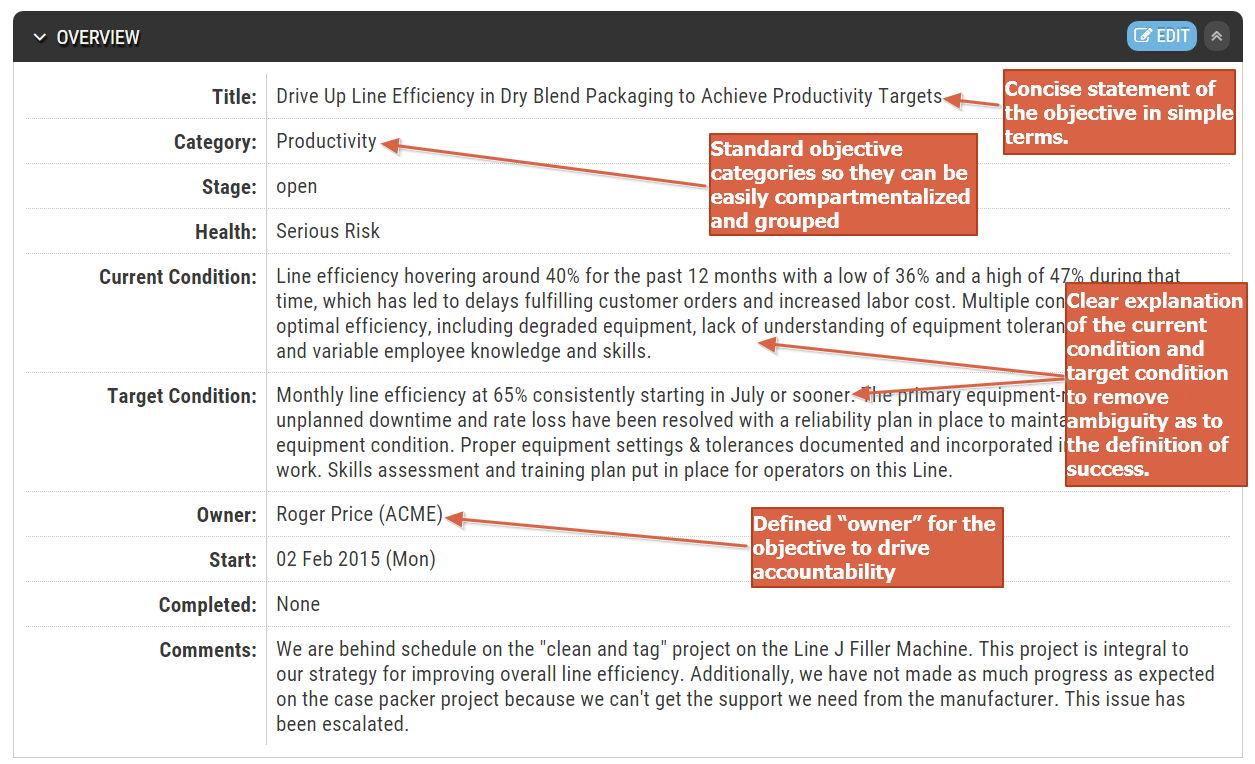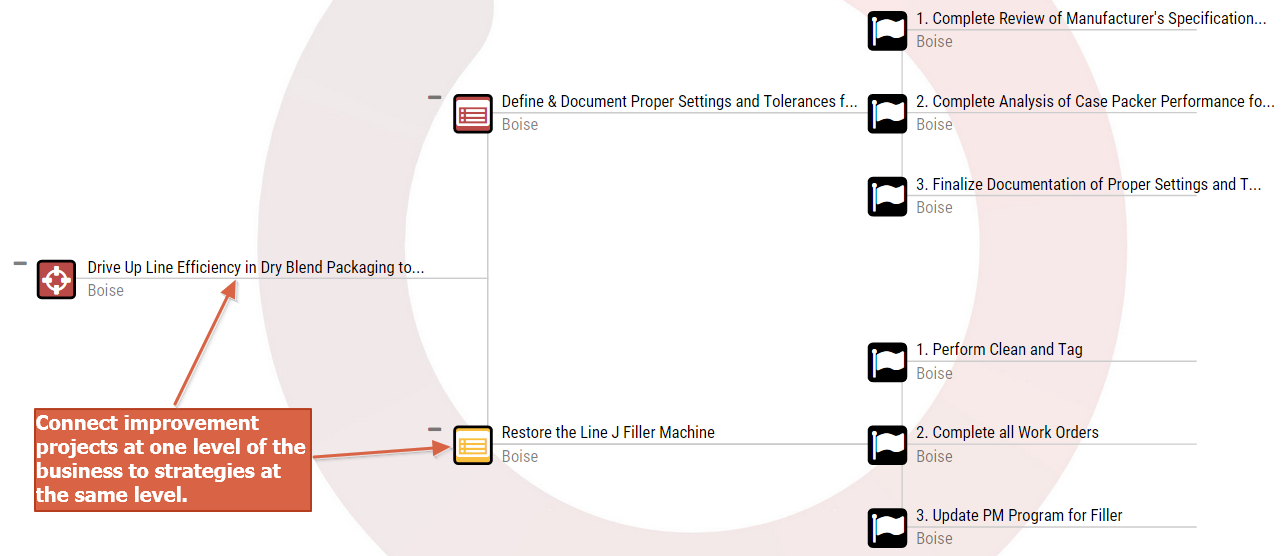It’s amazing to me that there is still so much variability across companies when it comes to strategy deployment, both the process for setting strategy and the output that’s generated from it. While it’s true that certain methods, such as Hoshin Kanri or the Balanced Scorecard, have gained some traction and driven a bit of standardization, our client and prospective client conversations continue to reinforce that most organizations have their own unique approach.
Regardless of approach, we at EON believe there is a model for what a fully developed enterprise strategy should be. Keep in mind that the purpose for developing an enterprise strategy is to drive alignment as to what’s important to the business so that everybody is appropriately applying their effort in support of the business. In other words, the output of your strategy setting process has to deliver value as a meaningful communication tool for the workforce and management tool for the business. Unfortunately, many organizations end up with a set of strategic objectives that are too vague or somehow create confusion instead of clarity. Here are a few example strategies that we think miss the mark:
- “Improve Supplier Relationships” – For which suppliers? Are all suppliers the same or are some more critical than others? What’s the business impact?
- “Expand Sales Globally” – By how much? In which markets? For which products or services?
- “Improve Customer Communications” – For which customer segments? To what end? What’s the tangible business impact?
- “Increase Customer Retention” – Isn’t this an evergreen opportunity? Are there certain customers who should not be retained? If so, how does this reality align with the strategy?
Unfortunately, all too often organizations end up parsing their strategy down to a series of generic 3-5 word statements like the ones above. These statements are then loosely attached to a set of KPIs that they plan to use to measure progress. The challenge this creates, which is highlighted by the questions posed for each strategy, is that there isn’t enough nuance and detail for the workforce to comprehend the full intent of each objective. Or, worse yet, they simply ring hollow and damage the workforce’s perception of leadership in the process. Attached below are screenshots designed to highlight what a well-written strategic objective should look like, how to connect that objective (i.e., the “what”) to relevant improvement projects (i.e., the “how”) and how to flow strategic objectives through the organization. Our hope is that these examples will help you to develop a work product from your strategy setting process that does justice to the intense thought and analysis that most certainly went in to developing your strategy and sets you up for success in executing your strategy.
Figure 1: Sample Plant-Level Strategic Objective

Figure 2: Projects Explicitly Linked to Strategic Objectives

Figure 3: Flow of Strategy through the Organization for One Enterprise Strategic Objective

Document, Deploy, and Manage Strategy with EON
The screenshots above were taken from EON® software. EON specifically designed EON to support strategy execution and business improvement, particularly for larger organizations that are continually challenged to maintain alignment and drive a robust improvement agenda across a distributed workforce. Clients use EON to set and deploy their strategy, manage their project portfolio, standardize business processes, and analyze performance.
To learn more about how EON can help your business, facilitate your strategy development process and/or utilize the EON platform to effectively deploy your strategies, please contact us today.

